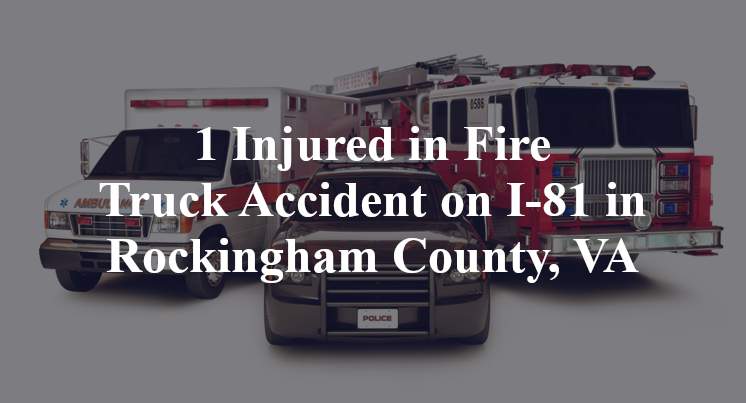1 Injured in Fire Truck Accident on I-81 in Rockingham County, VA
Rockingham County, VA — October 30, 2025, one person was injured due to a car versus fire truck accident along Interstate Highway 81.
According to authorities, a fire truck was traveling in the northbound lanes of I-81 in the vicinity south of Friedens Church Road and slowing at the scene of a separate wreck when the accident took place.

Officials indicate that, for as yet unknown reasons, a Ford sedan collided with the rear-end of the slowing fire truck. The person who had been behind the wheel of the Ford reportedly suffered serious injuries due to the wreck; they were transported to a local medical facility by EMS in order to receive necessary treatment. Additional details pertaining to this incident—including the identity of the victim—are not available at this point in time. The investigation is currently ongoing.
Commentary
When a passenger vehicle crashes into the back of a fire truck that was already slowing near the scene of another wreck, the legal questions focus squarely on awareness, visibility, and reaction time. Emergency vehicles—especially large, high-profile ones like fire trucks—don’t just appear out of nowhere. So the central issue becomes: Was the sedan driver inattentive, or was something about the situation unexpected or unclear?
Fire trucks typically operate with warning lights activated when responding to or clearing from crash scenes. If that was the case here, investigators will want to know: Were those lights on and visible? Was the fire truck moving slowly in an active travel lane, or had it begun shifting onto the shoulder or stopping? These details matter because rear-end collisions involving emergency vehicles are often less about “following too closely” and more about how clearly the emergency scene was communicated to oncoming traffic.
It’s also important to examine the driver’s line of sight and stopping distance. At highway speeds, even a brief distraction—checking a phone, adjusting the radio, or glancing at GPS—can erase the window a driver has to react. If traffic ahead is slowing or stopped due to an earlier crash, failing to notice that change in time can quickly lead to exactly this kind of impact.
On the flip side, if the fire truck slowed unexpectedly without fully clearing the lane or without activating appropriate warning equipment, that could complicate the fault analysis. Emergency vehicles have legal protections, but they also carry responsibilities when operating in live traffic. It’s not enough to assume one party is always at fault—the specifics of timing, movement, and visibility must be reconstructed.
Key Takeaways:
- The main legal focus is whether the sedan driver had adequate warning and time to avoid the slowing fire truck.
- Investigators must confirm whether the fire truck had its emergency lights on and whether it was clearly visible in traffic.
- Even minor distractions at highway speeds can eliminate a driver’s reaction time, especially near crash scenes.
- Emergency vehicles are protected under the law, but they must also be operated in a way that accounts for surrounding traffic.
- Dash cam footage, scene measurements, and visibility analysis will be critical to determining whether this crash was preventable.

“These are essential reads for anyone dealing with the aftermath of a truck wreck”– Attorney Cory Carlson